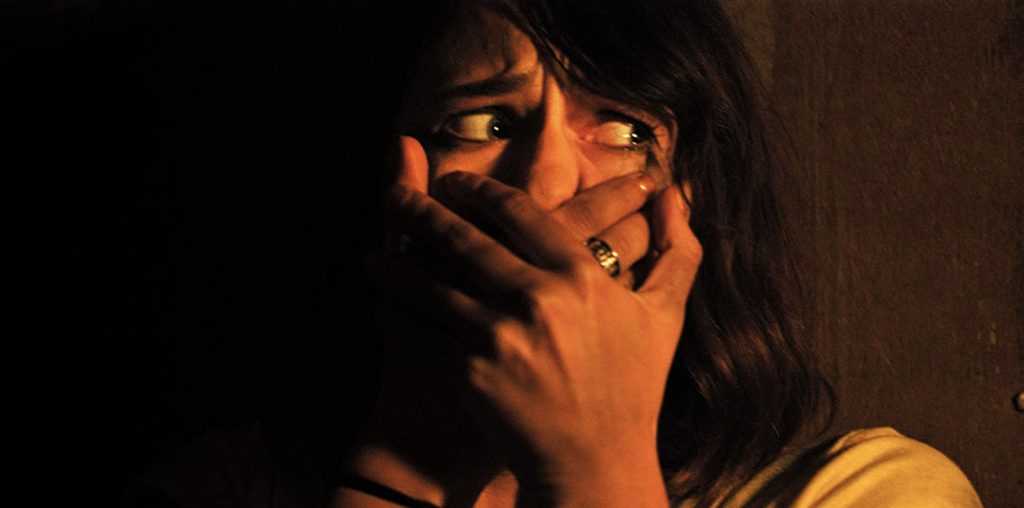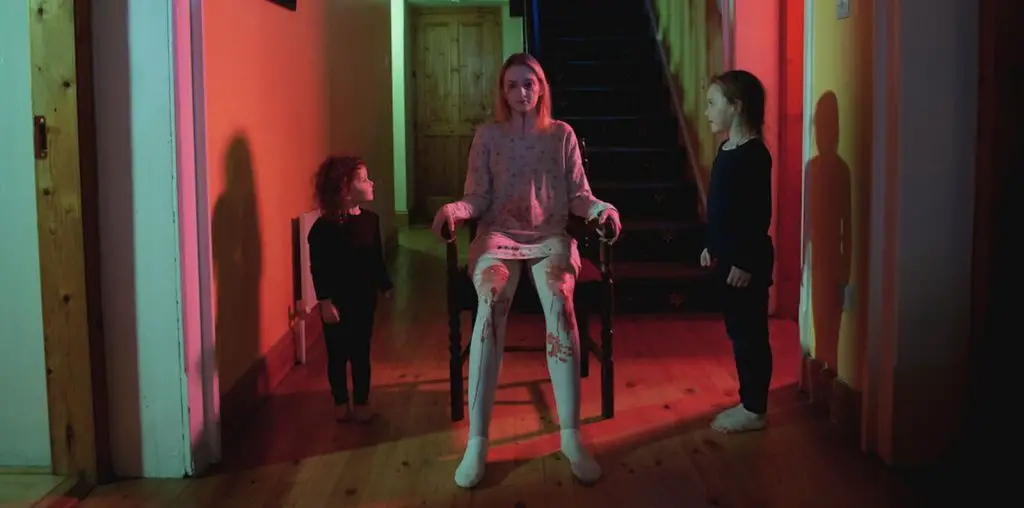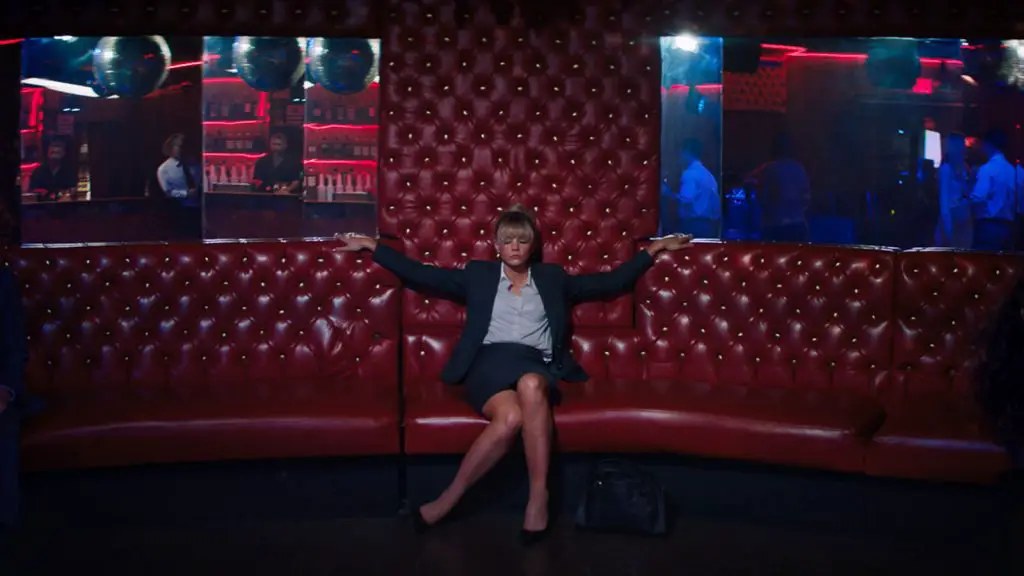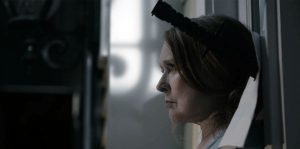
A prime example is when Wayne, Derek, and Billy (also known in the film as JR) concoct their plan for confronting Mrs. Kane. The three expend valuable screen time discussing whether or not one of them is cheating in a game of poker. Each actor’s cadence is so drawn out that by the time the scene arrives at its objective, i.e., the discussion of Mrs. Kane, the scene really should be over.
Inconsistencies reveal themselves, such as when Mrs. Kane forbids Wayne from smoking in her house. Interesting, because earlier in the film, Mrs. Kane was smoking in her bedroom. Then, at one point after shots are fired, barking dogs can be heard in the background. A filmmaking gaffe maybe, but certainly confounding to the viewer because Mrs. Kane does not own any dogs.
“…glacially stages his scenes as if he is attempting to tangibly mimic the sleepy, backwoods setting…”
On the good side, the cinematography by Patrick Barry is stunning and perfectly showcases the sleepy, backwater, southern town. Hazy sunlight filters through window curtains filling Mrs. Kane’s bedroom in a soft yellowish glow, and shadowy effects nicely accentuate the stalking sequences in Mrs. Kane’s home. Additionally, the industrial score by Franko Carino is an especially excellent fit for the material.
As lead redneck Wayne, Peeler has an unusually chilling manner about him, that recalls Willem Dafoe at his most unnerving. The exaggerated lethargy in his voice, coupled with that “is there something in his mouth,” facial tic makes for a suitably disquieting onscreen presence. He is an excellent foil to the perfectly cast Keaton.
The few admirable attributes aside, Cry for the Bad Man is purely one-note; no subtext or overarching theme is anywhere to be found. The movie exists solely for the few barely-satisfying bloody moments and, other than the presence of Keaton, really can’t even be classified as an exploitation movie. It hardly fits the bill as a thriller.
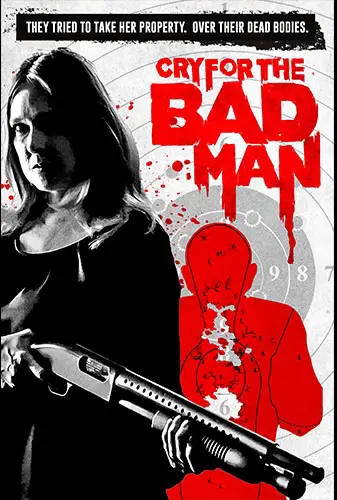
"…the revenge movie has a long and dense history in cinema."
